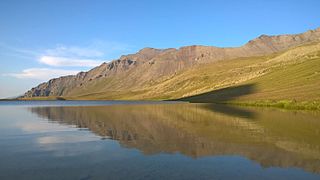
For the first time, researchers from the University of Oxford, University of Edinburgh, and University College Cork have prepared an online database of all ancient hill fort sites in the UK and Ireland. This database of about 4,147 hill fort sites provides detailed information of the hill forts, including their locations, to users.
Hill forts in the UK and Ireland were built during the Iron Age, and have been attracting historians, tourists and artists for the past many centuries. The oldest hill fort in this region dates from around 1000 BC, while the most recent was built in 700 AD. According to researchers, not all of these forts are located on hills (some were built on low-lying land) and, interestingly, not all of them can be described as forts (many of them were used as gathering spots for trade and festivals).
Researchers spent about five years on this project that was funded by the Arts and Humanities Research Council in the UK. About 100 citizen scientists took part in the project to provide information about the hill forts they had visited in the past. This information was later analyzed by a team of experts.
According to them, 4147 sites identified as hill forts include well-preserved forts as well as almost completely ruined sites with crop marks only. About 40% of the sites (1,695) are in Scotland. More than 405 of these sites can be found in the Scottish Borders alone. In England, there are 1,224 such sites; Northumberland has the maximum with 271 hill forts. Mayo and Cork, in the Republic of Ireland, have more than 70 sites. In Wales, Powys County leads with 147 hill forts. The Maiden Castle stretches for about 900 metres in Dorset. Certain hill forts in Northumbria are very small, little more than a couple of roundhouses.
The online database, in the form of a website, will be freely available to the public.
“Standing on a windswept hill fort with dramatic views across the countryside, you really feel like you’re fully immersed in history,” said the University of Edinburgh’s Prof Ian Ralston, who co-led the project.
According to Ralston, this project involved members of the public who shared “the stories of the thousands of hill forts across Britain and Ireland in one place.”
Prof Gary Lock, an emeritus professor of archaeology at the University of Oxford, said the online database would be useful for researchers, heritage managers, and others, and would provide a platform for further research on hill forts.
According to him, the term “hill fort” was coined in the early 20th century by archaeologists of a military frame of mind. At that time, it was believed that Britain, during the Iron Age, was invaded from the continent, and in response, the British built hill forts. However, it is now known that several so-called hill forts were not built on hills, and many of them were never attacked during the Iron Age.
Gary Lock believes the new online database of these sites will “encourage people to visit some incredible hill forts that they may never have known were right under their feet.”
